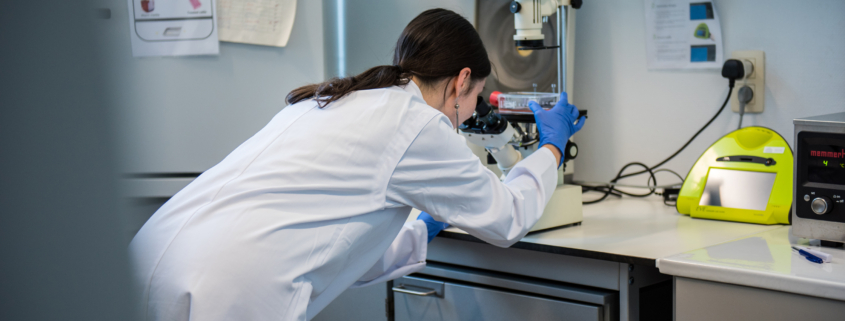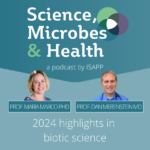2024 in Review: Important Advances in Biotic and Microbiome Science
By the ISAPP Editorial Team, with contributions from the ISAPP Board of Directors
2024 was another banner year in the scientific literature on probiotics, prebiotics, synbiotics, postbiotics and fermented foods as well as microbiome science. Scientists were prolific in all of these areas, with well over 10,000 published papers on biotics and fermented foods. 30,000 papers were published on the microbiome, with around 13,000 of these specifically focusing on the gut microbiome. In all of this scientific literature, some advances stood out from the rest because they either used a unique approach or advanced an important direction in the science.
2024 saw a continuation of the previous years’ expansion of biotic applications for different health endpoints. For example, new evidence emerged this year that shows the potential of probiotics for medical applications such as cancer diagnostics and treatment. Other groups emphasized the importance of host factors when testing the health impact of a biotic, with both the diet and baseline gut microbiome identified as relevant to biotic effects. Furthermore, given the importance of the baseline microbiome composition, the question of what characterizes a healthy gut microbiome was tackled in 2024 with renewed energy.
Here are ISAPP’s picks for the top developments in biotic and microbiome science from the past year, compiled with input from the ISAPP board of directors.
Extension of probiotic applications in cancer
Over the previous decade, several scientific groups have explored the possibility of leveraging the gut microbiome to enhance an individual’s response to cancer immunotherapy. But two highly-cited papers this year from Dr. Tal Danino PhD and colleagues demonstrate more direct use of probiotics in cancer detection and treatment. One paper shows how the probiotic strain E. coli Nissle 1917, when orally delivered, colonizes colorectal cancer tumors in both mouse models and humans. The researchers engineered the probiotic to produce the small molecule salicylate, which provided a non-invasive method for detecting the presence of tumors. Further, the researchers showed that the strain could be engineered to produce immunotherapeutics delivered locally by targeted tumor colonization, thereby reducing the size of the tumors. The other paper further explored treatment in experimental models: the researchers first targeted cancer tumors using a non-pathogenic strain of Escherichia coli that selectively colonized the tumors and released ‘tagging’ antigens, and then designed a type of chimeric antigen receptor (CAR) T-cell therapy to target these antigens and initiate killing of the tumor cells. These papers show that research on biotic applications in cancer has great potential and may lead to novel therapies in the years ahead.
New gut microbial mechanisms with the potential for developing probiotic interventions
Several new papers dug deep into potential probiotic interactions with the gut microbiome, aiming to create probiotic interventions that target unique endpoints. This year, two groups independently showed (here and here) that it’s not the liver alone that conjugates amino acids to bile acids – enzymes from the gut microbiota also participate in this process. This finding could lead to probiotics that produce bile acid metabolites for a range of beneficial health effects.
In another example, the lab of Prof. Andreas Bäumler PhD showed how a sustained post-antibiotic depletion of Clostridia in the gut can induce sorbitol intolerance. An intervention with sorbitol-consuming and Clostridia-promoting strains prevented this sorbitol intolerance, demonstrating importance of the microbiome in digestion and the mechanisms of food intolerance – with probiotics being prime candidates for food intolerance prevention or treatment.
Revisiting the scientific criteria for prebiotics
Since the prebiotic concept was introduced 30 years ago, and further after the ISAPP definition in 2017, scientists’ understanding has continued to evolve around how to measure the interactions of a prebiotic with the microbiota as well as the mechanistic links between prebiotics and their health benefits. To provide clear guidance on how to assess a prebiotic given developments in the field, ISAPP produced an expert consensus publication on scientific criteria for prebiotics. This paper, along with its accompanying checklist, builds on ISAPP’s 2017 definition of prebiotics and represents an important step forward for the advancement of new prebiotics.
Enhancing biotic benefits through metabolites
Short-chain fatty acids (SCFAs) are metabolites that have long been considered important mediators of the health benefits of both probiotics and prebiotics, but scientists have had difficulty creating well-designed studies to explore this concept, in part because SCFAs are metabolized rapidly in the blood circulation (and fecal metabolite measurements may be unreliable). Building on these insights, one paper published this year provided a proof-of-concept for a method of providing a more continuous supply of SCFAs in the blood of mice, using an engineered probiotic. This work represents an advancement in understanding the potential mechanisms of prebiotic benefits and potentially learning how to enhance those benefits for specific indications.
Field-wide efforts to understand impact of diet on biotic interventions
Numerous factors may help determine how an individual responds to a biotic intervention and the health benefit they receive. Both dietary patterns and individual foods are known to influence the digestive tract environment, either directly or indirectly (for example, by modulating the gut microbiome), and are thus relevant factors in shaping responses to a biotic intervention. Thus, one of the most important factors influencing responses may be a person’s habitual diet – yet dietary data has very seldom been incorporated into biotic studies. In an ISAPP paper this year, a group of experts published a call to include dietary data in all biotic trials going forward, with the goal of gaining insights into biotic responses.
Another group documented the interactions between a large number of dietary compounds and the gut microbiome, showing insights into how dietary substances, including potential prebiotics may be processed by the gut microbiota and thereby affect health – with variations observed from person to person.
New ways to interrogate activities in the small intestine
Scientists are increasingly recognizing that the microbiomes in different parts of the digestive tract have very different functions – further highlighting that the “gut microbiome” is not synonymous with the stool microbiome. Further, a nuanced approach to examining microbiomes in different areas of the gut may lead to insights into biotic mechanisms of action. Researchers this year made advances in finding ways to interrogate the microbiome and activities in the small intestine. At the ISAPP meeting, speakers presented two different methods for sampling small intestinal contents. First, the ingestible Small Intestine MicroBiome Aspiration (SIMBA) capsule collects and preserves a small intestinal fluid biopsy; in a small study it was able to detect a probiotic intervention that was not evident from the individual’s stool samples. And second, another ingestible capsule named CapScan preserves samples from different regions of the digestive tract, including the small intestine, allowing low-cost sampling of the small intestinal microbiota. Samples collected using this method captured spatially distinct as well as shared taxa between the small intestine and stool. Insights from such sampling methods may contribute to insights about biotic health mechanisms of action as well as the microenvironment in which they act.
Progress in understanding a healthy gut microbiome
To date in the scientific literature, the lack of definition of a healthy gut microbiome and related biomarkers remains a significant gap in the field, creating a moving target for research on microbiome-directed interventions. Several publications this year explored the possible features of a healthy gut microbiome and how close we are to establishing biomarkers for microbiome health. A Perspective paper involving 37 experts led by the Human Microbiome Action Consortium, for instance, laid out a plan for expanding knowledge of the relationship between the human microbiome and health. They argued that the optimal strategy is developing diverse population-scale cohorts that are followed longitudinally, allowing the heathy reference subpopulations to emerge from the cohort over time. The authors advocate for a more inclusive and accurate definition of health, including data on health determinants. In another publication, a similar group explored progress toward microbiome-based biomarkers and determined that one main barrier in this area is the lack of validated methods for microbiome analysis.
Meanwhile, another group found that fecal microbial load may be of key relevance to health and disease associations drawn from microbiome data. Researchers found that microbial load could be predicted from fecal microbiome profiles, and application of this model to existing datasets showed that fecal microbial load was strong predictor of gut microbiome composition in a number of disease states, weakening the association of microbial composition with disease. Overall, fecal microbial load was suggested as an important confounder in existing disease-microbiome associations warranting further attention.
Engaging the public in scientific directions
A Perspective paper from the lab of Prof. Sarah Lebeer PhD advanced the idea that, in biotics as well as other areas of research, citizens and patients should be included in all stages of scientific research. Prof. Lebeer gives the example of her Isala project on women’s health and the vaginal microbiota, which garnered enthusiastic participation from over 6000 women. The researchers solicited input for study aims, data gathering, and more, ultimately generating data and insights that are aligned with real-world needs and contribute meaningfully to advancing women’s health. A network of similar projects is being established around the world, providing a model of how to expand the impact of research while engaging the group that will benefit most from the results.
ISAPP looks forward to sharing and collaborating in more exciting advances ahead in the field in 2025 – stay tuned for our ongoing blog posts and podcasts featuring important advancements in the science of biotics, fermented foods and the microbiome.







